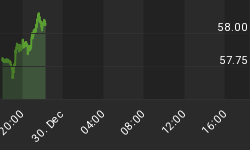Delinquency Debt & the Collections Crisis

The 2008 Financial Crisis is often attributed to a sudden freeze in liquidity in the Shadow Banking System, stemming from borrower default problems within the securitization of Mortgage debt.
Six years later we have an even larger problem which is now associated with a national sub-prime economy securitizing its debt through the same unregulated Shadow Banking System. As prior to the 2008 Financial Crisis, credit regulations are once again mistakenly being quietly changed to increase credit flows.
As Yogi Berra said: "Its Deja vue all over again!"
A Bigger "Collections" Crisis
The US collections problem is with little doubt worse than it was six years ago once the government and its' credit pusher lobbyists' 'spin' is removed.
- 77 Million Americans face debt collectors.
- 35% of Americans have debt in Collection. Roughly, every third person you pass on the street is going to have debt in collections. The average is $5,178.
- Roughly 1 out of 20 (5.3%) of people with a credit file are at least 30 days late on a credit card or other non-mortgage account (e.g., automobile loan, student loan).
- A staggering 70% of census tracts have at least 25% of people with reported debt in collections. This means it is a US wide problem.
- Health care-related bills account for 37.9 percent of the debts collected, according to a new report commissioned by the Association of Credit and Collection Professionals. Student loan debt represents another 25.2 percent and credit cards make up 10.1 percent, with the rest of the collections going for local governments, retailers, telecoms and utilities.
- According to a new study by the Russell Sage Foundation, the inflation-adjusted net worth for the typical household was $87,992 in 2003. Ten years later, it was only $56,335, or a 36% decline... Welcome to America's Lost Decade. Simply put, the NY Times notes, it's not merely an issue of the rich getting richer. The typical American household has been getting poorer, too.
- Tow trucks in America no longer have Towing on the side of the trucks but instead has been replaced with TOWING & RECOVERY. Think of it, everyone is driving new cars they can't afford so towing is small business but 'recovery' is now their primary business.
The American family is broke.

Government Policies of Financial Repression have crippled savers and pensioners.

The US middle class which feeds the 70% consumption economy has been 'gutted' with escalating costs in health & education, removal of defined benefits for retirements while have real disposable income shrunk.


The 70% Consumption Economy Problem
The government is caught in a trap where it perceives it must increase credit to thereby increase consumption to sustain a 70% consumption economy. It has only so many options available as shown below.

Government's Only Response: Change the Rules
The simple truth is after an initial period of "Extend & Pretend" Policies, then replaced by "Kick-the-Can-Down-the-Road" Policies it has resorted to "Fake It Until You Make It. To do this they are changing the credit rules. When governments get into a problem you can always count on them to change the rules. John Rubino and I in this 30 minute video show how the government is doing this regarding Credit Card FICO scores, Car Loans, Student Loans, Mortgages and HELOCS.
Sub-Prime II Video
Why It Won't Work
All of this is a waste and won't work. Citi Rob Buckland's lays out the four cycles of credit:

Phase 1: This begins at the end of a recession, when interest rates have fallen, money is cheap, but stocks are still battered.
Phase 2: A bull market sets in during phase 2, when stocks start to rise as easy credit lubricates the economy.
Phase 3: This is the tricky part. Stocks are still flying high, but credits spreads are widening as investors become increasingly unwilling to finance further risk. Corporate CEOs have now experienced a lengthy period of gains and become risk-happy. (And we'd note that central banks are already talking about tightening credit by raising interest rates.) Bubbles can form in Phase 3, Buckland says, as the high-flying stock market ignores the early warning signs of the deteriorating credit market. Hello, tech startup IPOs!
Phase 4: Stocks react to the lack of available credit by collapsing, and we see the kinds of things you get in a recession: "This is the classic bear market, when equity and credit prices fall together. It is usually associated with collapsing profits and worsening balance sheets," Buckland says.
We're in Phase 3 right now, Buckland says, but we may not be very far into it. Here's (Click to see Buckland's checklist of warning signs for Phase 3) .
Conclusions
60% of the families in America have absolutely no buffer for an emergency except to increase their debt levels. A third have nothing saved for retirement with the private sector no longer having meaningful pension plans.

The whole system is being financed within the Shadow Banking System which is borrowing short and lending out long to the Sub-Prime Economy. It is ripe for someone to yell "fire" and to see short term liquidity implode as it did in 2008.

Join the discussion at Financial Repression Authority.

For more detail on how this distortion is being orchestrated and sustained, signup for your FREE copy of the GordonTLong.com THESIS PAPER: FINANCIAL REPRESSION
Signup for notification of the next MACRO INSIGHTS
Request your FREE TWO MONTH TRIAL subscription of the Global Macro Tipping Points (GMTP) Report at GordonTLong.com
No Obligations. No Credit Card.
















